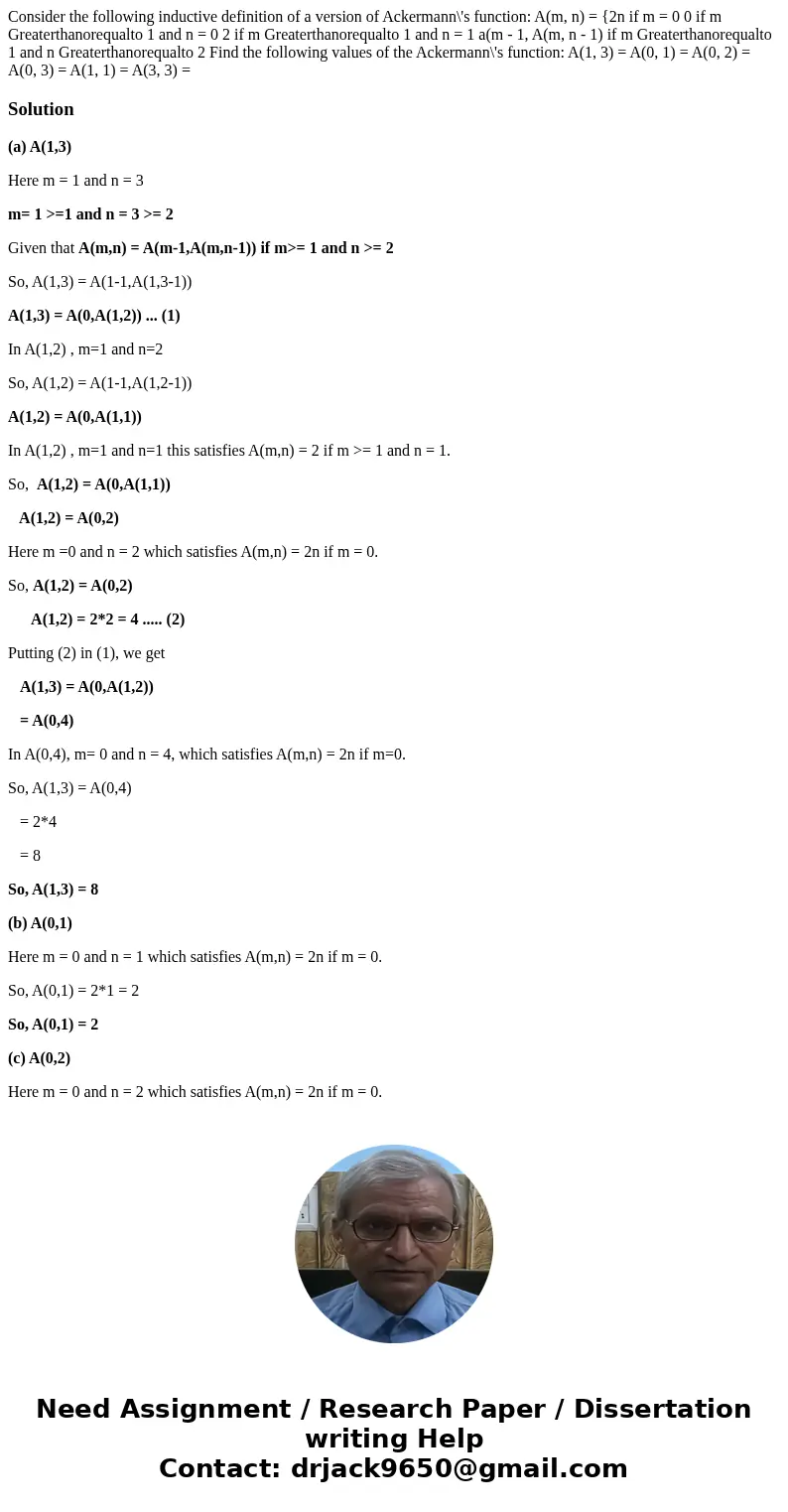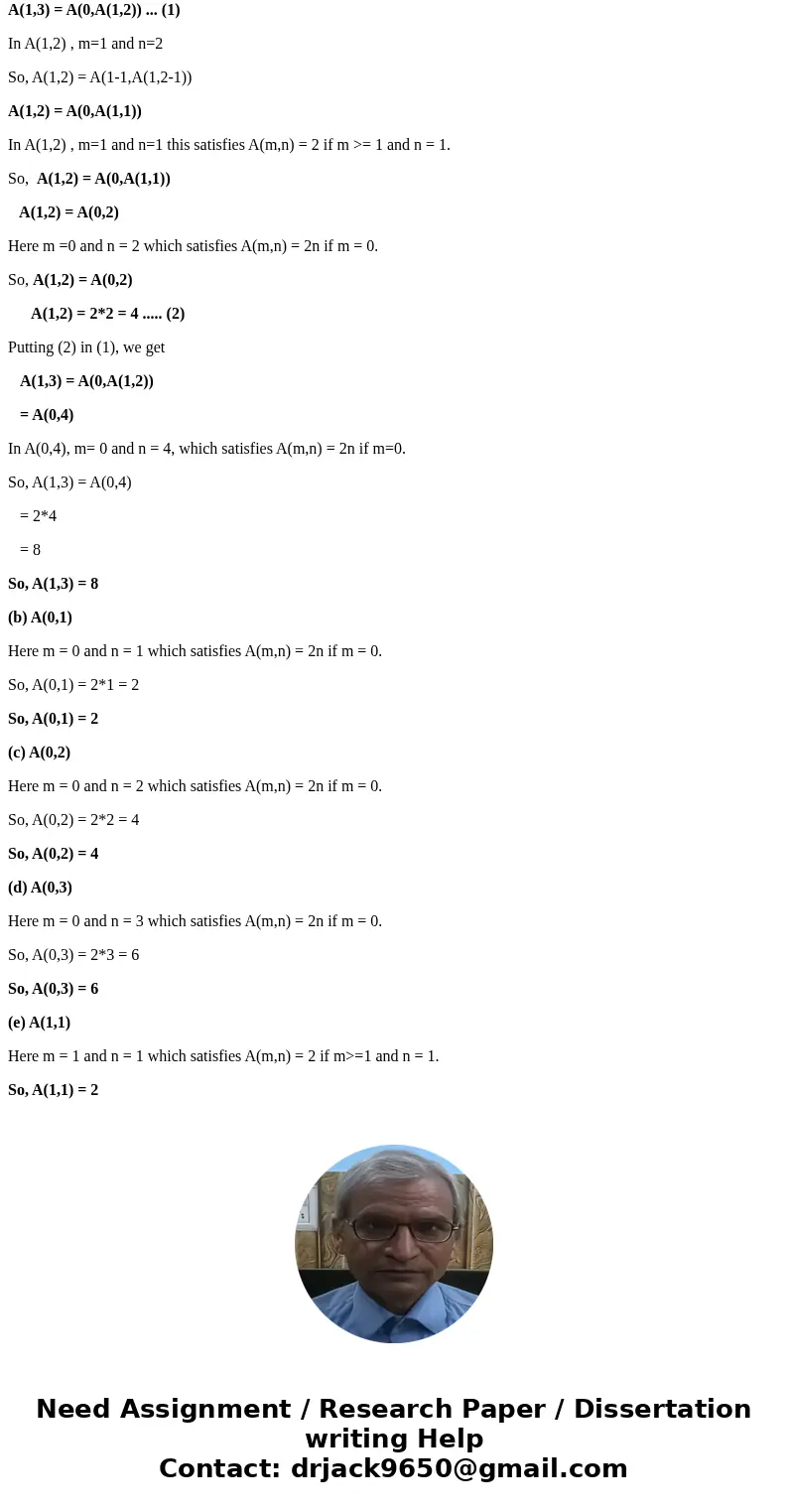Consider the following inductive definition of a version of
Solution
(a) A(1,3)
Here m = 1 and n = 3
m= 1 >=1 and n = 3 >= 2
Given that A(m,n) = A(m-1,A(m,n-1)) if m>= 1 and n >= 2
So, A(1,3) = A(1-1,A(1,3-1))
A(1,3) = A(0,A(1,2)) ... (1)
In A(1,2) , m=1 and n=2
So, A(1,2) = A(1-1,A(1,2-1))
A(1,2) = A(0,A(1,1))
In A(1,2) , m=1 and n=1 this satisfies A(m,n) = 2 if m >= 1 and n = 1.
So, A(1,2) = A(0,A(1,1))
A(1,2) = A(0,2)
Here m =0 and n = 2 which satisfies A(m,n) = 2n if m = 0.
So, A(1,2) = A(0,2)
A(1,2) = 2*2 = 4 ..... (2)
Putting (2) in (1), we get
A(1,3) = A(0,A(1,2))
= A(0,4)
In A(0,4), m= 0 and n = 4, which satisfies A(m,n) = 2n if m=0.
So, A(1,3) = A(0,4)
= 2*4
= 8
So, A(1,3) = 8
(b) A(0,1)
Here m = 0 and n = 1 which satisfies A(m,n) = 2n if m = 0.
So, A(0,1) = 2*1 = 2
So, A(0,1) = 2
(c) A(0,2)
Here m = 0 and n = 2 which satisfies A(m,n) = 2n if m = 0.
So, A(0,2) = 2*2 = 4
So, A(0,2) = 4
(d) A(0,3)
Here m = 0 and n = 3 which satisfies A(m,n) = 2n if m = 0.
So, A(0,3) = 2*3 = 6
So, A(0,3) = 6
(e) A(1,1)
Here m = 1 and n = 1 which satisfies A(m,n) = 2 if m>=1 and n = 1.
So, A(1,1) = 2


 Homework Sourse
Homework Sourse